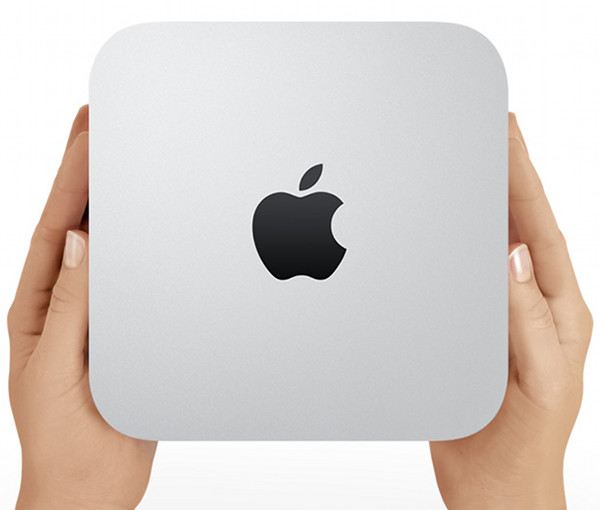

- Apple i mac mini 2010 mac os x#
- Apple i mac mini 2010 upgrade#
- Apple i mac mini 2010 windows 7#
- Apple i mac mini 2010 windows#
Apple i mac mini 2010 windows#
Granted I don’t have identical hardware by another manufacturer to confirm that this isn’t negligence on Apple’s part to optimize its firmware for Windows 7.
Apple i mac mini 2010 windows 7#
While I measured 8W at idle under OS X, running Windows 7 (power saver mode) on the Mac mini resulted in a 12W idle power without any changes to the hardware. The idle battery life advantage comes from lower idle power, presumably through heavy OS and hardware optimization. Under load however, the OS X power advantage disappears - we are after all dealing with the same components regardless of OS. Reading web pages, typing a document, etc.
Apple i mac mini 2010 mac os x#
As we’ve shown in the past, Mac OS X tends to offer better battery life than Windows in situations where the system sees a lot of idle time. The third explanation for why Apple is able to make such a bold claim about the Mac mini’s power consumption has nothing to do with hardware at all. I’ve even heard that Apple goes to great lengths to ensure the CPUs/GPUs/chipsets it gets are on the lower power portion of the yield curve for products like the mini or MacBook Air. The mini is built entirely out of notebook parts with a custom motherboard design devoid of anything unnecessary. Part of it has to do with Apple’s component selection. Unlike the other two systems I mentioned here, the mini uses a custom, integrated 85W PSU specifically designed for the system’s load. Part of this has to do with Apple’s very efficient integrated PSU. I have not seen a modern desktop machine idle at lower power than the 2010 Mac mini. If I run the 2010 Mac mini in a similar configuration (minus the display/battery part since, well, they don’t exist), the entire system consumes 7.5W at idle.Ĭonnect to a WiFi network, plug in an Ethernet cable and you’re looking at 8W. The screen was disabled, battery removed, WiFi disconnected and no ethernet cables plugged in. Now that 8.1W number is unrealistic for a notebook. Even the ASUS UL50V notebook, with a Core 2 Duo SU7300 (1.3GHz) ultra low voltage notebook CPU idles at 8.1W with the screen disabled. Zotac’s HD-ID11, an Atom based next-generation ION nettop, idles at 21.7W. I thought that might be a bit of a stretch but if you look at the numbers, they’re very convincing. At £649, however, my brainer does find itself thinking twice.Apple calls the new Mac mini the world’s most energy-efficient desktop computer.
Apple i mac mini 2010 upgrade#
At that amount, it’d be a no-brainer upgrade for the Mini that is currently sitting in my living room. If you convert the US price of $699 into sterling - it's about £480 - and then add VAT, the price comes to about £570. In fact, its price and design are really more comparable to the premium-priced, ultra-portable MacBook Air. Apple used to say that the Mac Mini is intended as the low-cost entry-level Mac – the desktop counterpart of the popular white plastic MacBook laptop. The long-overdue addition of HDMI finally acknowledges the Mini's media centre credentials, while the improved graphics performance means that it can handle HD video with ease, and manage some decent gaming action too.īut the price is high. The design of the new Mac Mini speaks for itself – it makes most ‘small form-factor’ PCs look like bloated heaps of junk. However, this model lacks an optical drive altogether. This costs £929 with 2.66GHz processor, 4GB of Ram and twin 500GB hard disks. Incidentally, there is also a new ‘server edition’ of the Mac Mini, which comes with Snow Leopard Server pre-installed. In contrast, this new model is available in just one main configuration that costs £649 with a 2.4GHz Core 2 Duo - no Core i3 or i5 here - and 2GB of memory, albeit 1066MHz DDR 3.

The Mac Mini released towards the end of 2009 was available in two configurations: the entry-level model cost £529 with 2.26GHz Core 2 Duo processor and 2GB of Ram, or you could increase the processor speed to 2.53GHz and double up to 4GB Ram for £649. Apple clearly feels the new Mini is going to sit on desktops as well as the space next to someone's TV.Īnother newcomer is the SD card slot – inconveniently positioned on the rear – alongside a set of four USB ports, Gigabit Ethernet, Firewire 800 and digital audio in/out.īut while Apple has really gone to town with the engineering and aesthetic aspects of the Mini, a closer look at the spec sheet shows that it has cut a few recessionary corners in other areas.

Don’t forget that the Mac Mini is sold without monitor, keyboard or mouse. Peering around the back you’ll see a Mini DisplayPort interface alongside the HDMI, and Apple also includes an HDMI-to-DVI adaptor in the box so that you can use it with a DVI monitor. The insides are more accessible than before


 0 kommentar(er)
0 kommentar(er)
